Damavand Volcanic Crater
The last 300-400 m below Mount Damavand summit is considered the volcanic part of the mountain. However, igneous rocks (magmatic rocks), formed through the cooling of magma, can be found on the foothills of Mount Damavand. The highest part of Mount Damavand (near Damavand peak) is covered with sulfuric soil and rocks. It is also full of fumaroles of all sizes from which sulfuric smoke is released, filling the air of its smell.
volcanic craters
volcanic craters are circular depressions in the ground, created as a result of volcanic activities on the surface of the earth. There is usually a small lake on the crater’s vent, the part of a volcanic crater through which gases get released and lava erupts occasionally. Volcanic craters vary in size and depth and some are notably large.
During some volcanic eruptions, enough space gets freed in the volcano’s chamber for the ground above it to subside. The resulting large depression is called a caldera and resembles volcanic craters.
It’s important not to confuse fumaroles that emit gases with volcanic craters. All volcanic craters including Damavand volcanic crater are located on the summit; however, fumaroles can be found anywhere on a mountain as they’re formed wherever gases have found a way to the surface.
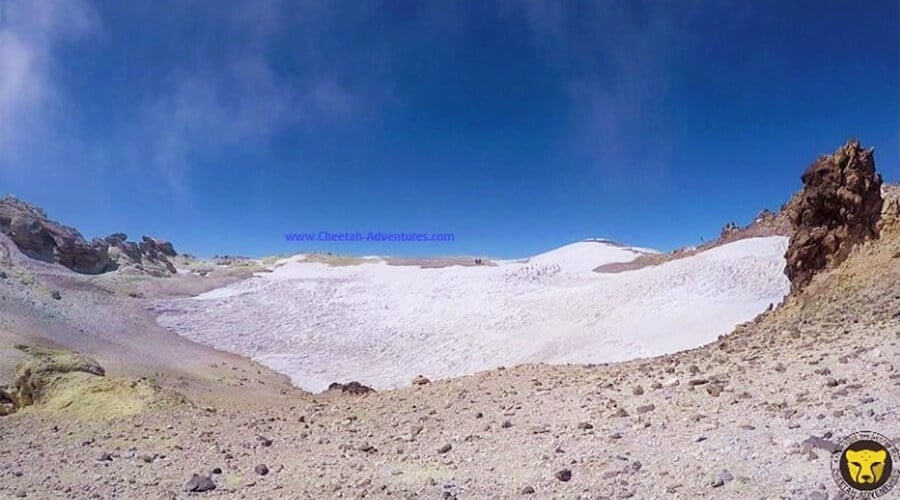
Damavand Volcanic Crater
Damavand volcano
The lava of Damavand volcano covers an area of 400 km². The newest layer of lava covers the western side of the cone. In addition, there are cones of ashes found on this part of the foothills of Mount Damavand. This area is an old crater and is currently surrounded by the new Damavand volcanic crater. The southeastern face of Mount Damavand is covered heavily by clastic rocks.
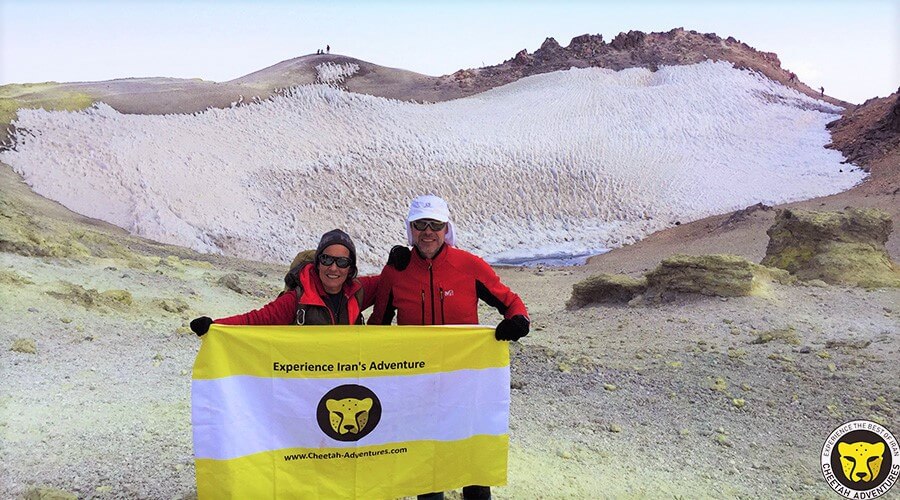
On the top of Damavand Peak-Damavand Volcanic Crater
Damavand crater
Mount Damavand is a potentially active conical volcano, formed in the fourth geologic time period known as Holocene. This magnificent volcano first erupted nearly 1.78 million years ago and most of its eruptions occurred between 600 – 280 thousand years ago.
The last significant volcanic activity of Mount Damavand has occurred nearly 10000 years ago (7300 to be exact) that has formed the current shape of the Mountain. Using the Carbon-14 method, the current form of Mount Damavand is estimated to be at least 38500 years old.
The existence of several sulfuric springs, hot water springs, and fumaroles emitting sulfuric gases are proof of the ongoing volcanic activities of Mount Damavand and its state of being potentially active.
Damavand Volcanic Crater
Located on the rather wide Damavand peak, Damavand Volcanic Crater has a diameter of approximately 400 m. There is a lake in the central part of the Damavand volcanic crater and there are fumaroles found on the outer part that has turned its surrounding area yellow. There are also signs of older volcanic craters found in the area.
One of these old craters is located on the southern face of Mount Damavand at 5100 m of elevation and currently emits sulfuric smoke. Another one of Damavand’s old volcanic craters is located on the northern face of the mountain and is almost 9 km in diameter.
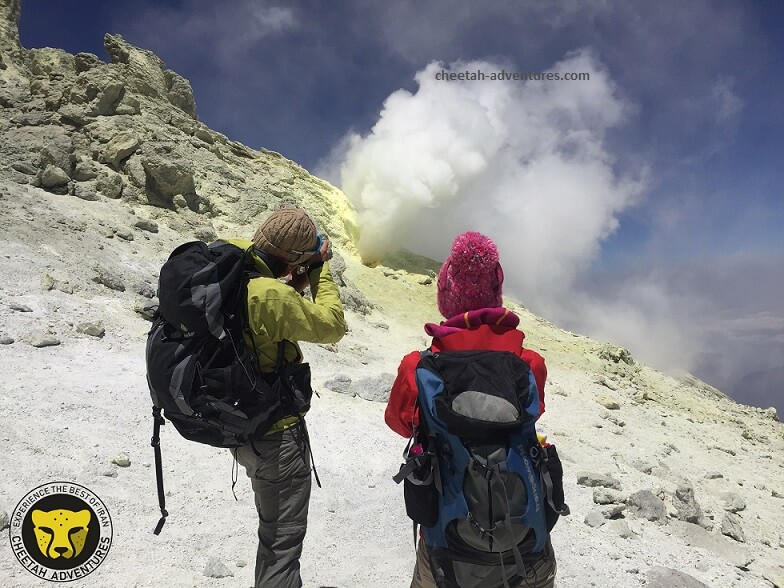
A picture of Damavand sulfuric smoke emission near Damavand peak

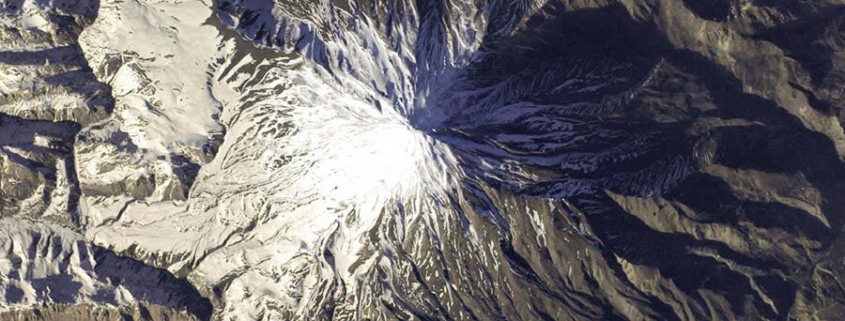
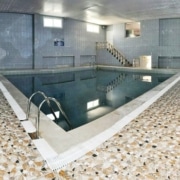
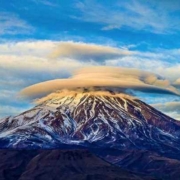
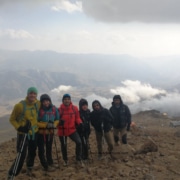
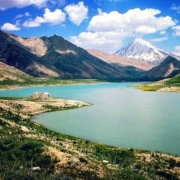

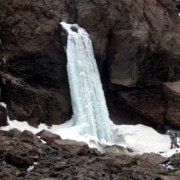


Leave a Reply
Want to join the discussion?Feel free to contribute!